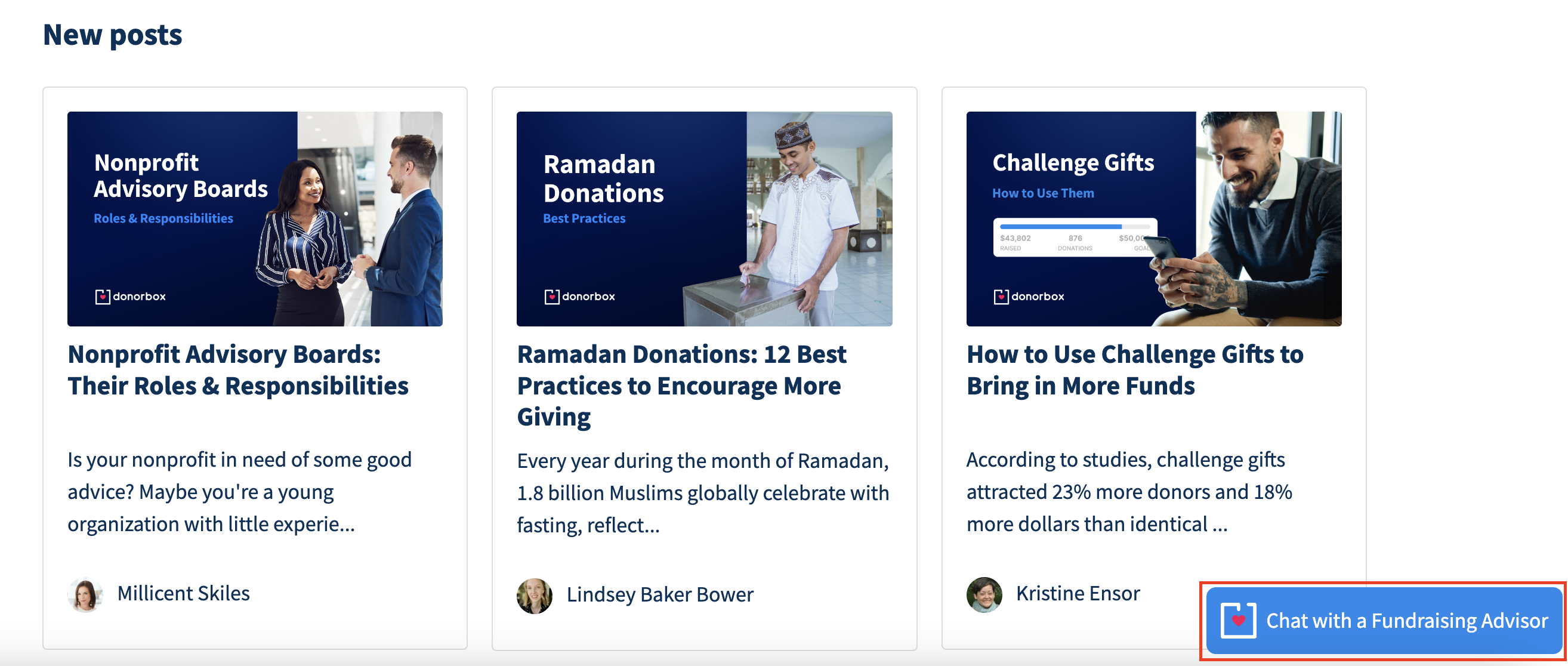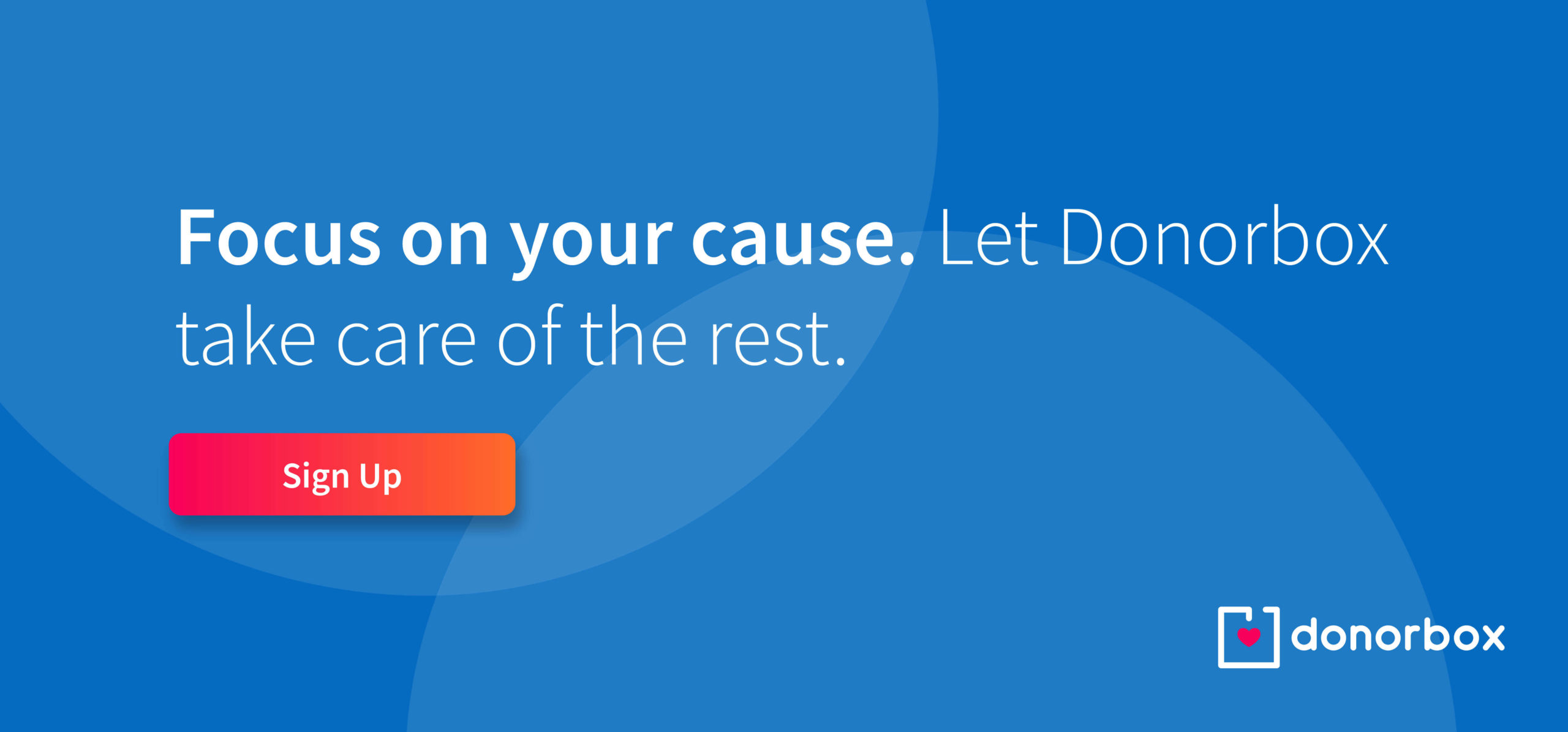Wondering if your nonprofit should harness the power of artificial intelligence? The short answer is yes. AI for nonprofits has been a game-changer for fundraising organizations, providing fresh ways to put donor data to work, streamline tasks, and, ultimately, raise more money.
It hasn’t been long since ChatGPT first exploded onto the scene and ushered in the biggest technological advancement since the internet. Since then, AI has been applied within virtually every industry and is expected to generate $1.3 trillion by 2032.
Artificial intelligence for nonprofits is exciting because it has the potential to supplement the two resources most fundraising organizations lack: time and money. As with any application, the success of AI for nonprofits relies on using the right tools and providing those tools with good data.
With so many AI products hitting the market, it’s hard to know which ones to use. That’s why it’s important to take the time to experiment and find out what works best for you and your nonprofit.
What is Artificial Intelligence?
AI’s rapid evolution has simultaneously delighted and frightened the world with its potential to replicate human thought. Will AI take away jobs, lead to groundbreaking advancements in medicine, or create a superintelligence that will rise up against humans?
The development of artificial intelligence dates back to the 1950s and refers to anything a machine can do to mimic human reasoning, decision-making, and communication. There are two general categories of AI: narrow and general.
Most people and businesses use and interact with narrow AI on a daily basis. It’s what shapes our social media feeds, adds eggs to our grocery list, and even operates self-driving cars. Narrow AI uses predetermined algorithms to perform a single task and nothing more. OpenAI’s chatbot ChatGPT, Google’s conversational AI Bard, and Microsoft’s browser assistant Copilot are all examples of narrow AI.
General AI, on the other hand, learns by doing and thinks and adapts like a human. It tackles complex problems without the need for programming or algorithms. While still being developed, the potential of general AI has inspired movie characters like the Terminator and Hal, the sentient computer in Space Odyssey that turns to murder when it senses sabotage.
Fortunately, AI’s impact in the nonprofit sector is far less sinister. In fact, AI holds enormous potential in the world of fundraising.

8 Ways to Use AI for Nonprofits
AI allows nonprofits to maximize already limited resources. It can reduce some of the grunt work associated with fundraising, enabling staff and volunteers to focus on what really matters: building meaningful relationships with donors.
Here are a few ways AI helps nonprofits work smarter, not harder:
1. Donor analysis
AI can analyze data to screen prospective donors, segment different audiences, and create predictive models about their behavior. Feeding AI a wealth of data about past and potential donors can help nonprofits identify new donor sources, gauge how much they are likely to give, and offer suggestions on how to engage them.
2. Social media
The influence of AI can be felt across multiple social media platforms. Facebook, for example, uses AI algorithms to make charitable giving recommendations to users. AI can also be used to manage and optimize content, produce effective call-to-actions that drive traffic to online donation pages, and monitor what other fundraising organizations are doing.
3. Generative content
Generative AI learns patterns and structures in order to generate text, images, or other media. While this content should never be directly copy-pasted, it can be used to inspire the perfect press release, scripts, persuasive emails, and powerful year-end giving letters. It can also be used to analyze and suggest ways to optimize existing content, correct grammar and spelling mistakes, and craft the perfect thank-you messages to donors.
4. Chatbots
These friendly AI assistants mimic human conversation and pop up to offer assistance to anyone browsing a nonprofit’s website. Whether answering a question, providing direction, or nudging a donation, chatbots can provide quick and personalized customer service at any time of day.
You can try this out yourself with our Donorbox fundraising advisor chatbot! Just click the button on the bottom right side of your screen and ask anything related to fundraising.

5. Administrative tasks
AI can be used to perform a variety of data-entry tasks that can be time-consuming, expensive, and prone to human error. This can be essential for data-driven fundraising that relies on accurate information. AI can also assist in writing effective grant proposals.
6. Plan events
With a bevy of logistical tools, AI is a master event planner. For starters, AI can help identify the best dates, times, venues, topics, and speakers for a particular event. It can also streamline registration and ticketing processes to provide a smoother user experience. During the event, AI can provide language translations, elevate virtual events, create personalized experiences, generate leads, and gather feedback.
7. Manage volunteers
Similar to events, AI can help nonprofits organize volunteers around a common effort. It can assist with finding quality volunteers, training, scheduling, communication, managing expenses, and soliciting feedback.
8. Fraud detection
AI can give nonprofits peace of mind by protecting financial transactions and sensitive donor information. AI tools can be programmed to monitor suspicious activities or notice language that may indicate fraudulent activities in emails, chat logs, or submitted forms.
While the power of AI is compelling, it’s important to remember that it does have its limitations and dangers.
How NOT to Use AI
The biggest limitation of AI is that it simply isn’t human. It lacks the consciousness and emotions that form the human experience and birth creativity. At least not yet. It’s also not without its dangers.
One of generative AI’s most surprising capabilities is its ability to create realistic images seemingly out of thin air. Critics worry AI’s ability to alter reality has the potential to spread misinformation and incite violence.
With this in mind, nonprofits should be particularly mindful of how they use AI. Here are some guidelines to follow:
1. Don’t plagiarize
Because AI pulls from existing content, it’s best to avoid directly copying and pasting whatever it generates. You never know if something is copyright-protected. Generative AI should be used to inspire good content, but ultimately, the content should be original. This includes images, especially if they are not attributed to the creator.
Google knows when content is automatically generated and might report it as spam, negatively affecting your efforts to rank high on search engine results pages.
3. Fact-check everything
AI can pull information from a variety of unchecked sources. Double-check for accuracy to ensure you have accurate data.
4. Don’t use it to develop a brand voice.
While AI can offer useful content suggestions, only a human can truly understand a donor’s pain points and develop thoughtful content to nurture them along their donation journey.
AI Tools for Nonprofits
With new AI companies and products being introduced seemingly every day, there’s a tool for just about every situation in the fundraising world. Picking the right one requires a little time and willingness to experiment. Here are a few to get you started.

1. Generative tools
ChatGPT, Bard, and Copilot – These generative AI tools are now popping up everywhere on web browsers and word processors. Ask them a question or give them a simple prompt and they can generate a range of content ideas that include text, images, audio, video, code, and synthetic data.
2. Writing assistant
GrammarlyGO – Made famous for its ability to correct spelling and grammar, Grammarly has added an AI writing assistant to help brainstorm content ideas, provide text on demand, write using voice assistance, and expedite email responses.
3. Design tools
Canva Magic Studio – The popular online design tool now uses AI to create custom, on-brand content within seconds. Upload media and provide a prompt to create professional presentations, videos, or social posts to use across a variety of platforms. Learn more about using Canva for Nonprofits here.
4. Donor prospect identification
DonorSearch AI – This predictive modeling program helps nonprofits identify and segment donor prospects using more than 800 data points. By recognizing patterns in donor data, the algorithm can make recommendations on which prospects are most likely to make a gift.
5. Marketing assistant
AdCopy – This virtual marketing assistant can formulate, rewrite, and optimize ads with just a link, a logo, and a few prompts. It offers customization options that integrate with Meta Ads Manager data and testing to create ads that convert.
6. Social media management tool
Buffer – This tool provides social media management tools to provide content ideas, repurpose posts, and summarize long content into shorter posts. It can also identify trending topics, current events, seasonal ideas, and more to create viral posts that engage audiences.
7. How-to guide generator
Tango – Document any process and turn it into a step-by-step interactive guide that you can easily share with staff and volunteers. Use crowdsource insights to measure, optimize, and collaborate on ideas to find what works.
8. Content generator
Surfer AI – Create ready-to-rank articles that drive traffic by providing this tool with a keyword and a few content settings. Select a tone of voice, boost anti-AI detection, adjust for organic competitors, and create custom content optimized for search engines.
9. Customer chatbot
TARS – This conversational chatbot platform can help elevate a donor’s customer experience with interactions that are engaging and intuitive. The no-code builder powers interactions between nonprofits and potential donors to nurture them along the donation process.
10. Chat marketing tool
ManyChat – Put chat marketing to work to drive sales and conversions on Instagram, WhatsApp, and Messenger. Connect with potential donors instantly to answer basic questions, respond to social media comments, and automate FAQs to usher them along the donation process.
11. Data analytics tool
Sisense – Convert data into donations with insights that are interactive and intuitive. This data analytics tool uses AI to digest data, refine insights, and make recommendations for the next best actions.
12. Website builders
10Web – Build a website in minutes using AI-generated content and images. The company also provides other AI-assisted tools for e-commerce, marketing strategies, and SEO optimization.
Framer – Input a few project details, add a brand color scheme, and instantly create a website to match. Select from a unique variety of layouts, effects, and navigation, make tweaks as needed, and boost SEO performance with content management options.
Final Thoughts
For nonprofits looking to maximize already-limited resources, AI offers endless options to save you time and money. With so many products hitting the market, it can be hard to know which ones to use.
Finding the right AI tool will take research and a willingness to experiment. When picking a product, consider your nonprofit’s workflow. What task takes the most time? In what areas do you lack resources? Where are you losing potential donors? Chances are, AI can help.
If you still need convincing, consider the fact that other nonprofits are already using AI to optimize every opportunity they have to attract the attention of donors. Simply put, you can’t afford to not use AI. Make today the day you conquer the learning curve and put AI to work for you.
For more fundraising tips, check out the rest of our Nonprofit Blog. Subscribe to our newsletter for a curated collection of blogs and resources delivered to your inbox every month.







